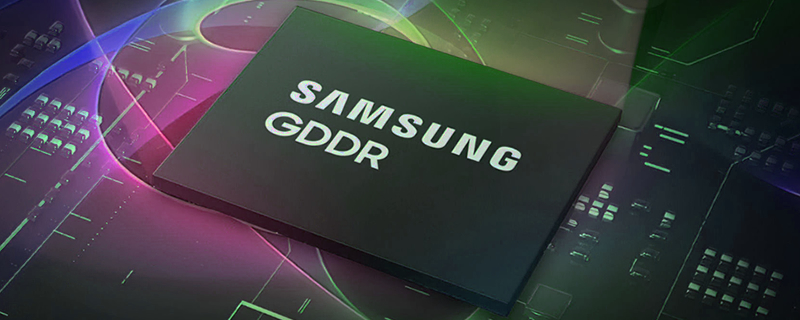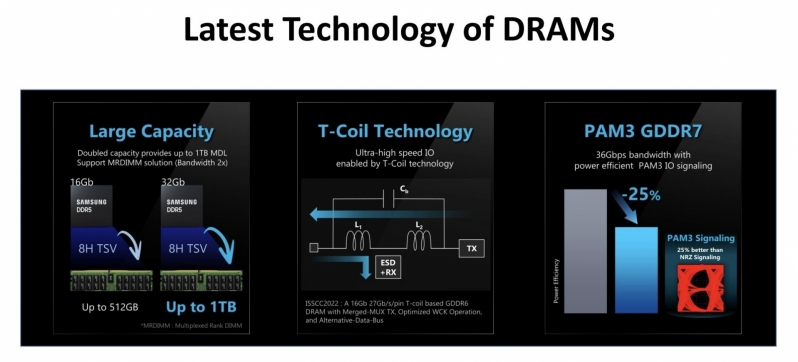Samsung reveals GDDR7 memory with PAM3 signalling and 36 Gbps speeds
Samsung shares new information about their planned GDDR7 DRAM modules
The next-generation of high speed memory will soon be here, with GDDR7 offering users much more bandwidth than today’s GDDR6 memory and higher levels of power efficiency.Â
Samsung has released a slide that details some of the technology used within their planned GDDR7 memory modules, confirming that they can deliver users 36 Gbps speeds. Today, 18Gbps GDDR6 memory modules are commonplace in many of today’s high-end graphics cards, with 20Gbps GDDR6 memory finding use within AMD’s Radeon RX 7900 XT and RX 7900 XTX graphics cards.Â
With speeds of 36 Gbps, GDDR7 is 2x faster than today’s mostly commonly used GDDR6 memory modules, and much faster than what GDDR6X memory can deliver. GDDR7 is confirmed to used PAM3 signalling, (Pulse-Amplitude Modulation) a change over the NR (Non-Return to Zero) signalling used by GDDR6. This change reportedly gives GDDR7 memory a 25% power efficiency advantage of GDDR6.Â
GDDR7 memory will allow graphics card manufacturers to offer users higher levels of peak memory bandwidth using smaller memory bus sizes and fewer DRAM modules. With GDDR7, 1152 GB/s of bandwidth can be offered using a 256-bit memory bus, and 1728 GB/s of bandwidth can be delivered using a 384-bt memory bus.Â
Bandwidth limitations have become a major limiting factor for modern graphics cards, forcing both AMD and Nvidia to invest heavily in cache related technologies (like AMD’s Infinity Cache), or large chip cache sizes to make modern GPUs less reliant on their connected GDDR6/GDDR6X memory. With GDDR7, new GPU designs will see an explosion in usable memory bandwidth, allowing GPU manufacturers to focus on other areas of GPU design.
You can join the discussion on Samsung’s 36Gbps GDDR7 memory on the OC3D Forums. Â




